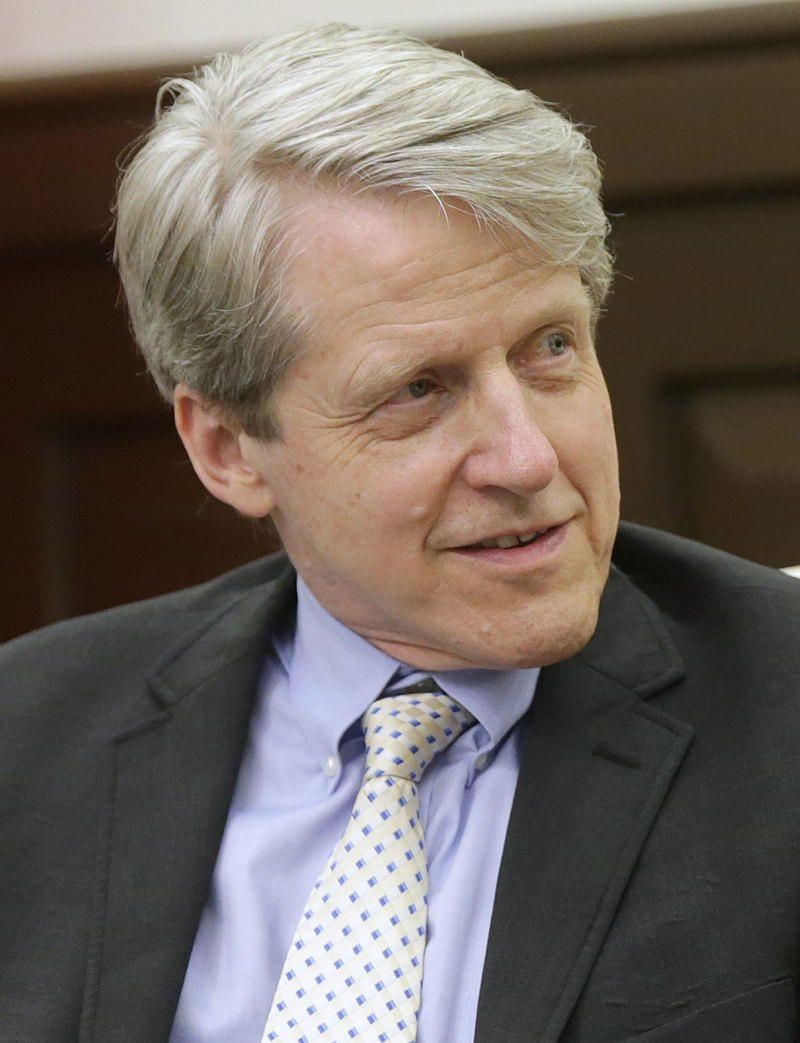Shiller’s Financial Innovations.

Rewriting the book on financial innovation
Robert Shiller’s novel The New Financial Order printed at the turn of the millennium, ponders financial innovation in the 21st Century. It is interesting to compare Shiller’s ideas of two decades ago with present developments in financial innovation to see whether he had any insight.
Shiller’s ideas
The main ideas in The New Financial Order were
An insurance for livelihood and home value.
Big-risk trades in a macro market.
Income-linked loans.
Inequality insurance.
Inter-generational social security.
International risk control agreements.
To achieve these Shiller proposed a global risk identification database (GRID) and new units of measurement and electronic money.
Current innovation
In the current age, data lakes exist in a network cloud. These enormous data resources could perhaps be mined directly to identify unknown risks. Potentially, companies like Google and Facebook have stores of information that would be able to give insight to risk scientists into new and evolving risk on a global scale.
Further, large language models can give eloquent reports to questions posed and may be used as an intelligent interface to the data lakes.
Across the world, digital currencies are being touted as a way to enhance convenience and enable audit trails to alleviate criminal currency laundering. There is no simultaneous argument for the potential pitfalls of digital currency, other than among alternate thinkers, or conspiracy theorists.
Perhaps Shiller’s idea of a different measure for money is the most admirable. He proposes an indexed currency, linked to a unit house price with official exchange rates to national fiat currencies. In the age of the homeless, especially linking the value of currency to the value of a house is a good idea. Imagine being paid in terms of the value of an average house. This is maybe a better idea than using the MacDonald’s Burger index used by the Economist to assess the relative prices paid by consumers around the world.
While the time between Schiller writing and now has marked the emergence of Bitcoin and other cryptocurrency, the maturing of this idea has led analysts to believe that they will be a toy for the rich, at best and at worst a Ponzi scheme. More main stream will be the government backed digital currencies alluded to by Schiller, which hope to make transactions instantaneous, and traceable. As an aside, this will be very useful in the study of money flow and it’s velocity. An intricate understanding of the flow of money will be very useful for future researchers of the economy.
A further development, aided by the ubiquity of the internet, is blockchain enabled finance or DeFi. While still in development, current offerings have favorable rates for debt and credit.
There is also, importantly for financiers, a marketplace where climate risk can be traded in insurance linked securities and catastrophe bonds. While the scale does not reach retail investors, there are avenues to invest in companies that invest in this type of security. The benefits are a very enticing return and risk that is uncorrelated with the markets and the economy.
Insurance products are not overly innovative. Maybe better methodology is needed to find the risks in the data lakes available. This would enable insurance offerings more in line with the livelihood risk Schiller highlighted.
The sixth of Schiller’s ideas have been covered by international trade agreements between the dominant and a lesser party. The conditions are most often much more favorable to the dominant than the lesser.